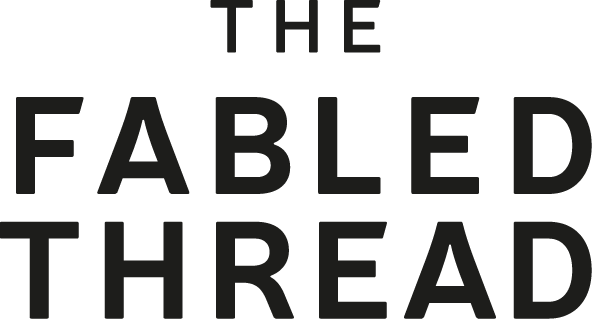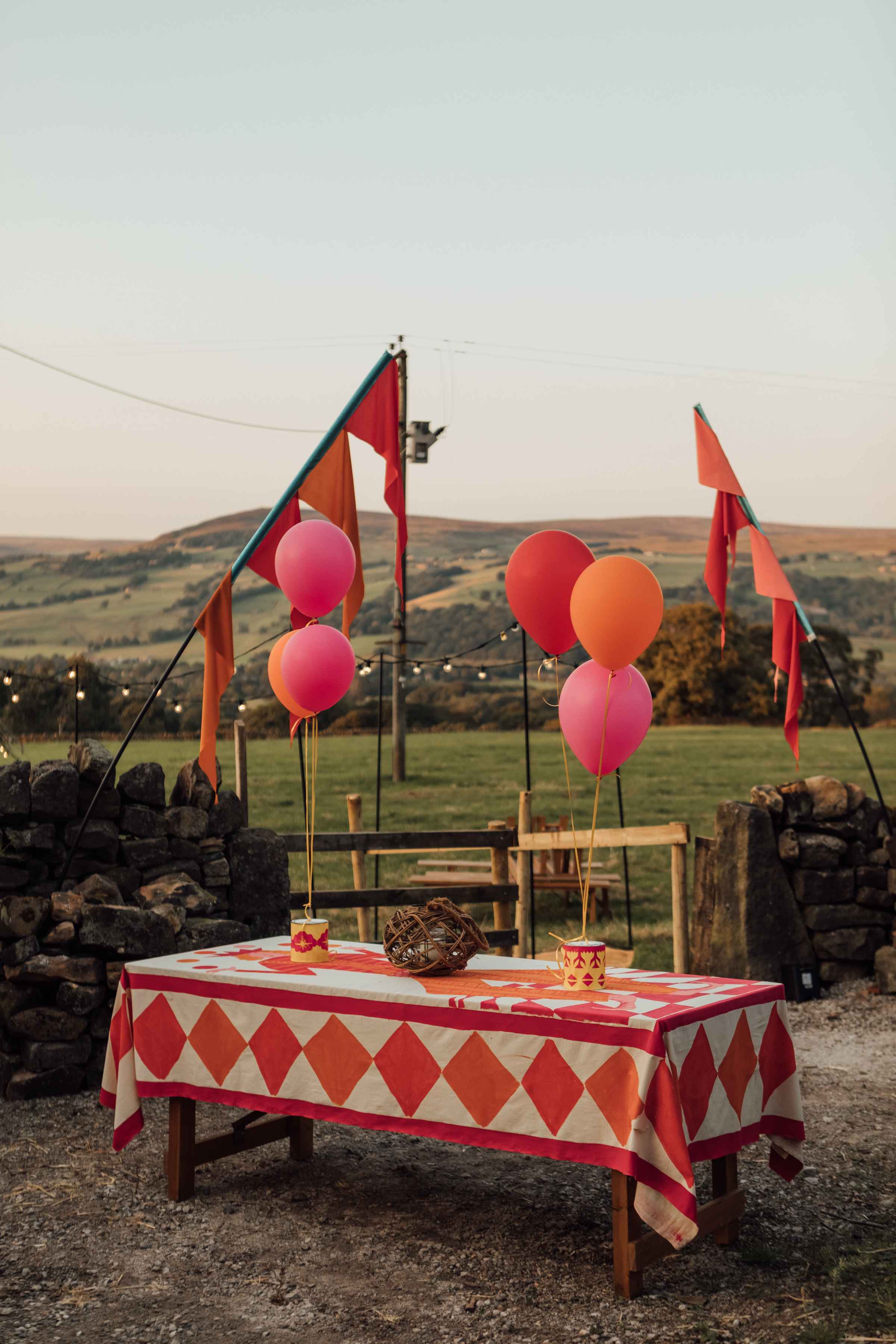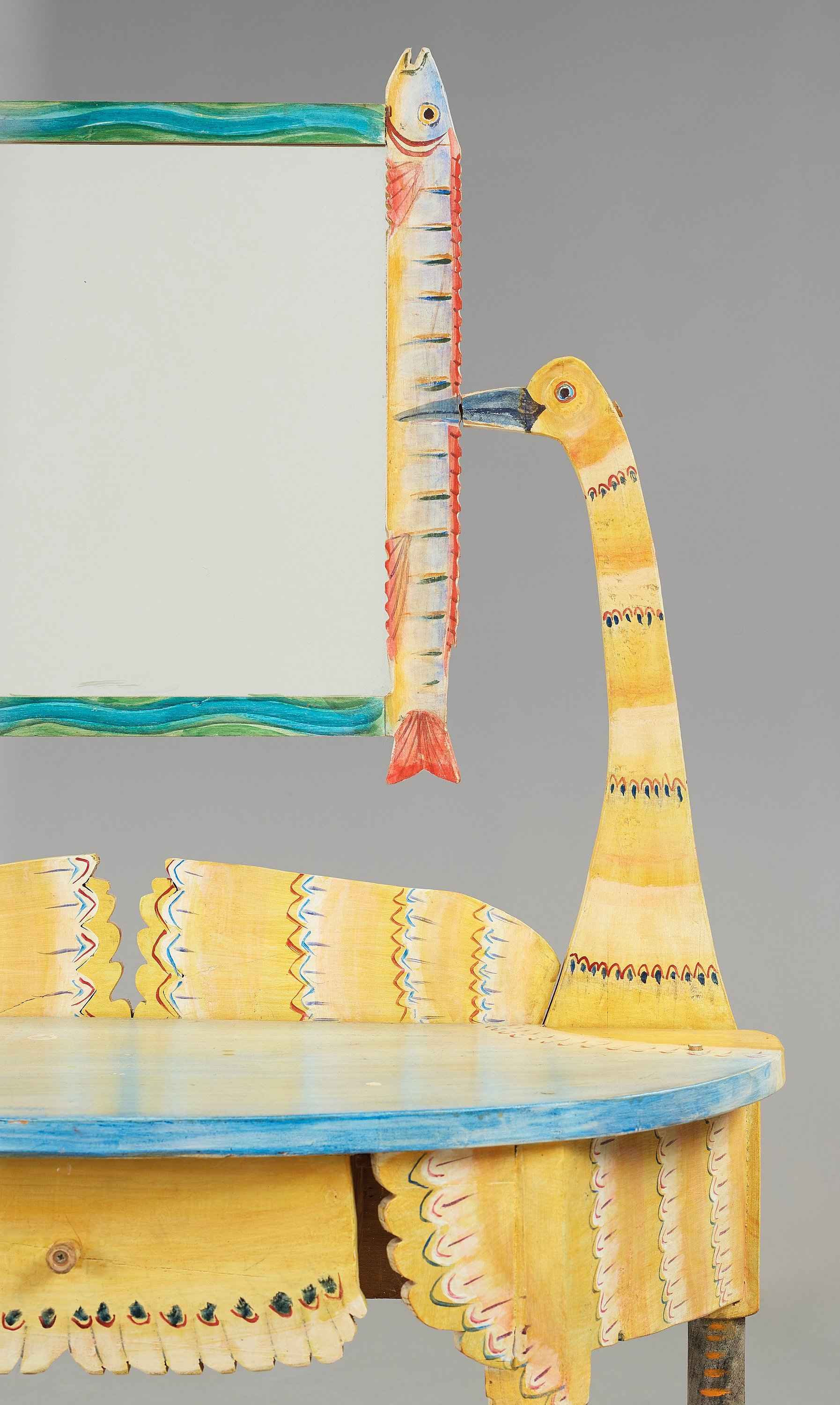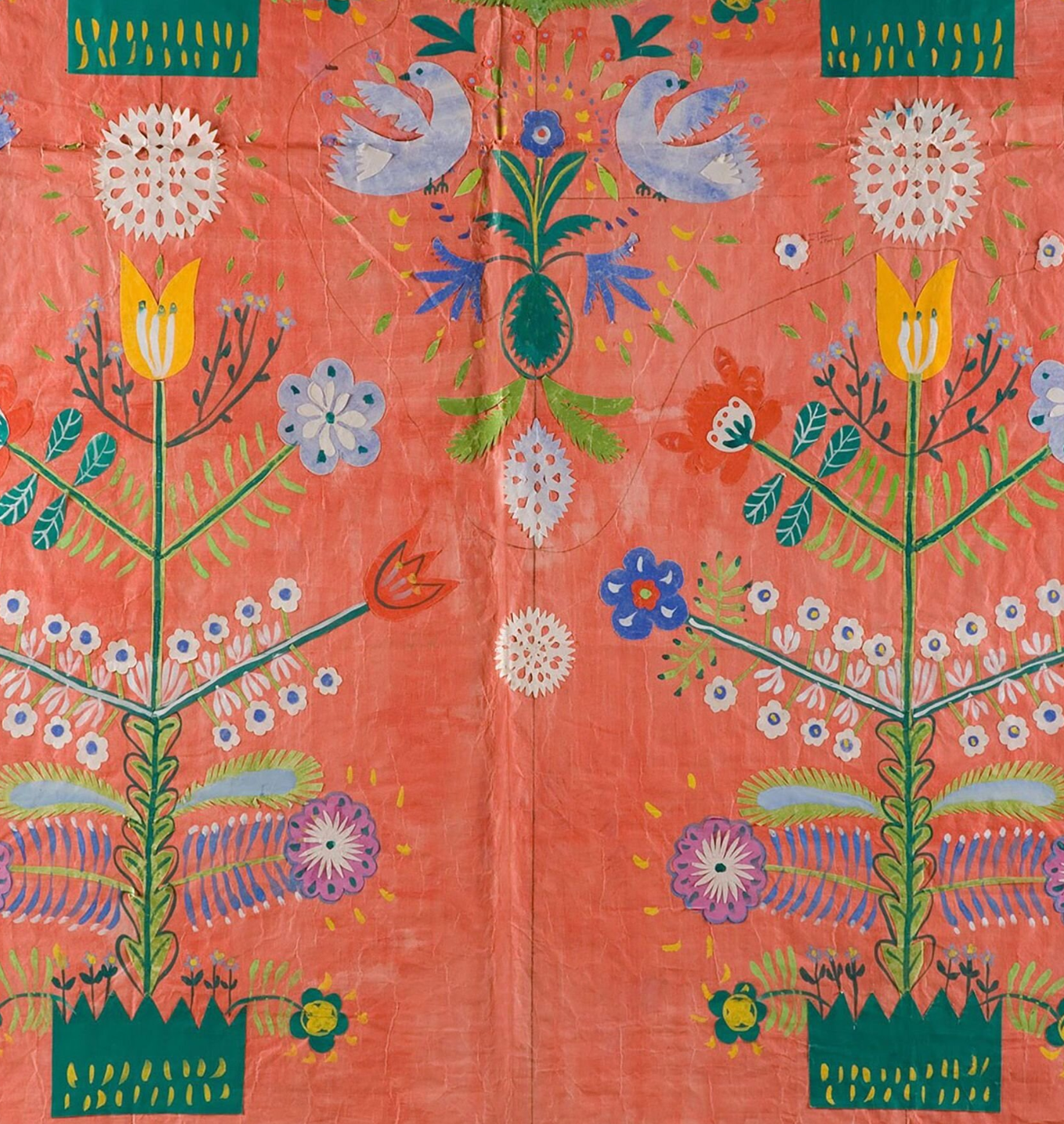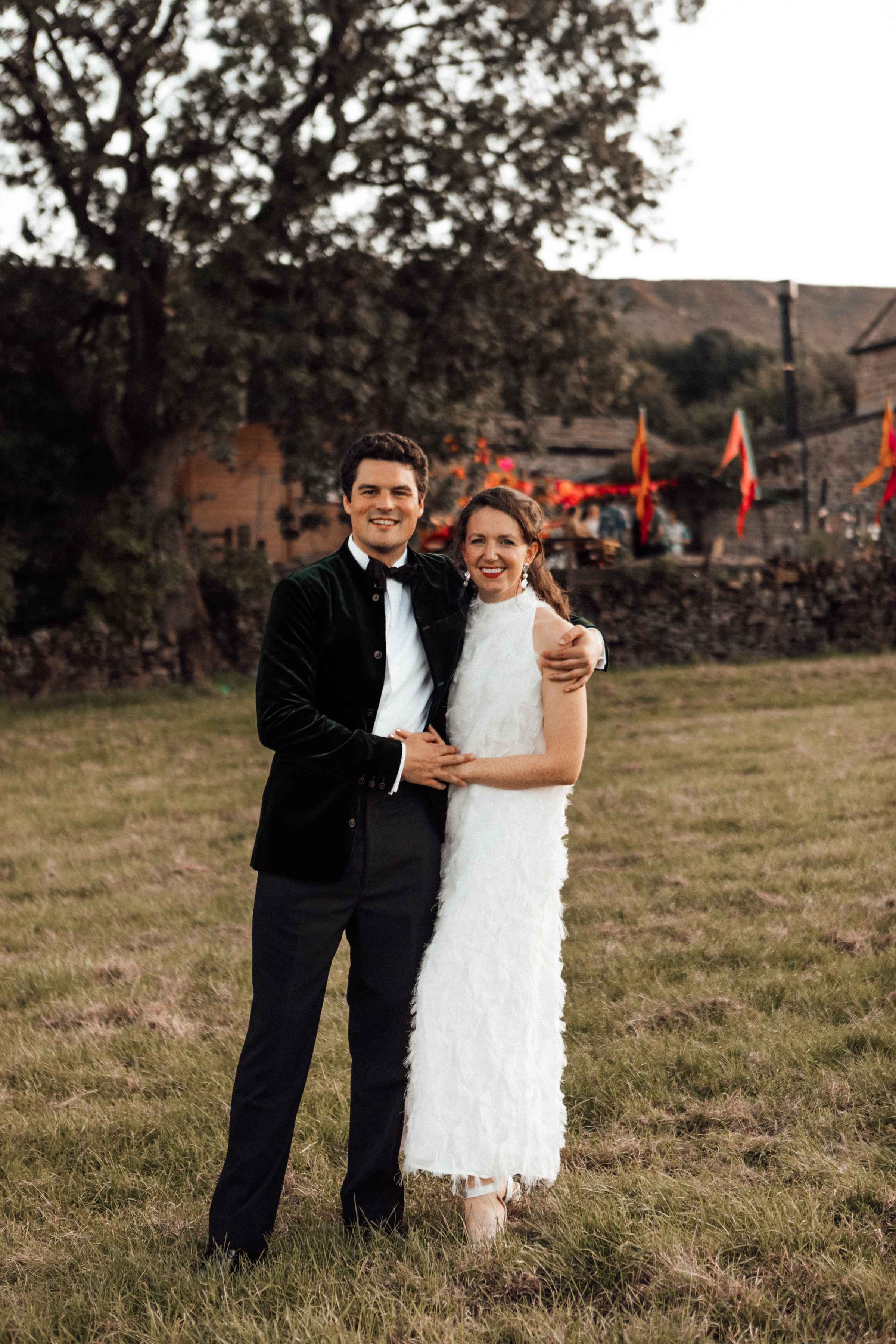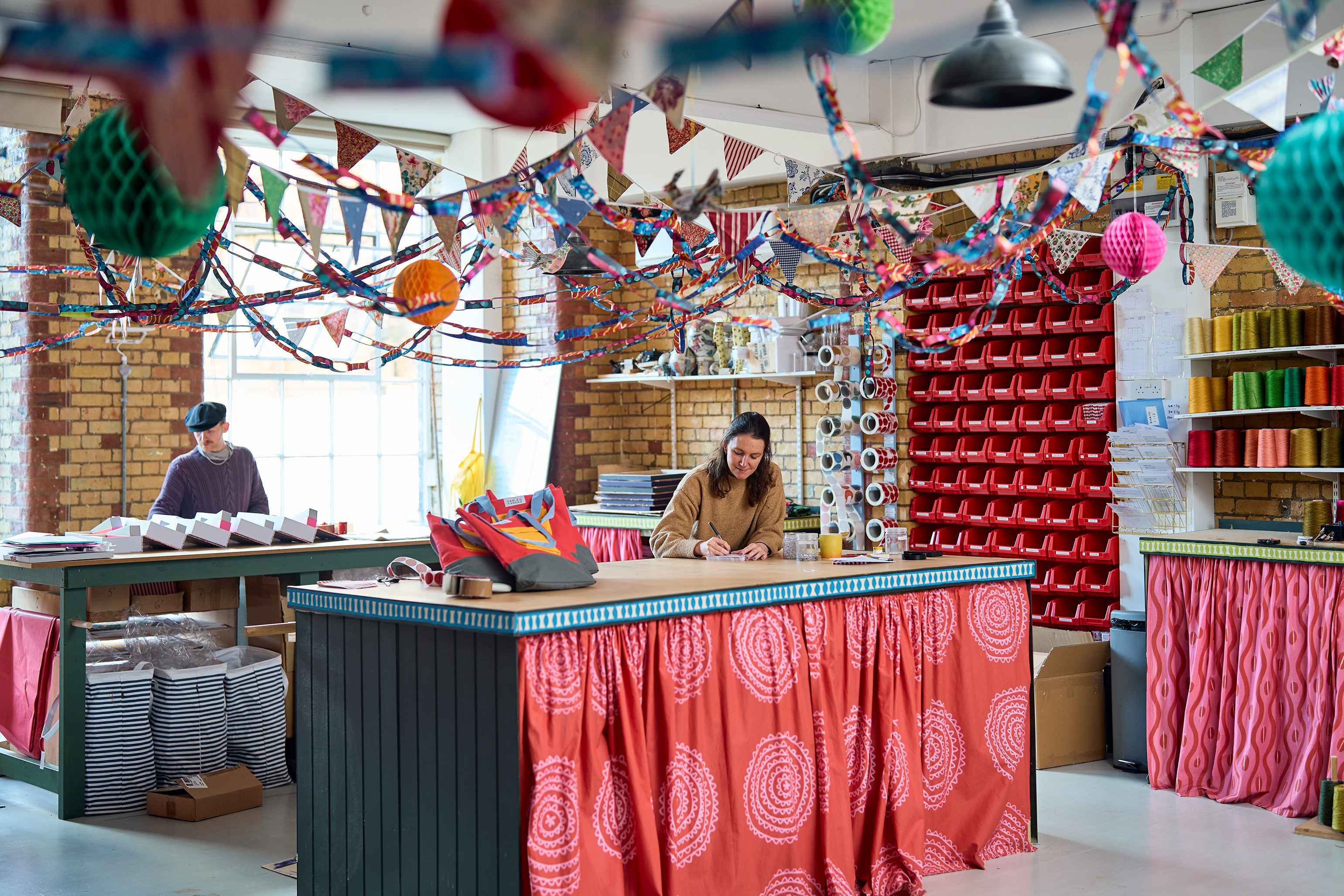
The Realities of Running My Own Business
This article was originally published for our Studio Members in December 2023. This is an example of the kind of behind-the-scenes article we write for Studio Members.
Earlier this week, I shared a reel to my Instagram, showing the steps to setting up my pop-up at Pentreath and Hall, and it got quite a strong reaction(you can see it below). Whilst I wouldn’t trade running my own business for anything, it is far from a smooth ride. In my previous corporate life, where 15+ hour workdays were the norm, I had assumed that running my own business would be a breeze. How wrong I was. It takes nerves of steel, unwavering resilience and a lot of hard work – every single aspect of which I only manage to maintain through the steadfast support of Harry, my family, the team and all of you!
Though I’ve never written about this topic before, I always appreciate it when other business owners share the unfiltered realities of their business (I’ve listened to every business podcast out there!). So, I wanted to share some of things I have learnt on the realities of running my own business. Whilst nothing would stop me doing what I do now, and I am very grateful for my initial naivety, I hope this candid account can give comfort to others muddling through in the same way that you aren’t alone. For those of you who have been on this journey with me for a while, I always want to be as honest as possible – it’s not all sunshine, roses and playing with papier mâché in the studio.
The process of writing this was quite cathartic, so it’s longer than I had initially intended... it was meant to be a 5 things I learnt and it’s ended up as 14... eek! I have such a long way to go and so much to learn, so these are more observations and things I am trying to improve, but I am certainly not mastering it all.
Do let me know what you think about articles like this as I know its not for everyone – do you like to hear about the way the business side of things work, or would you rather I stuck to the creativity and crafts only? I won’t be offended either way!
When you are the creative behind your businesses work, everything feels very personal. Not only do you have to have confidence to show the world what you are making or designing, if you are a product-based business, you have to have the conviction to order hundreds, if not thousands, of them. I think it’s only human to doubt yourself, but it’s so important to not allow those doubts to stop you doing it. So, insecurity is something I have been trying (not always successfully) to live with. Trying to learn to control it, not let it control me.
When you are juggling twenty different jobs, it’s inevitable that mistakes happen. As I am the one who orders everything, writes all the instructions, designs all the kits, sets up our processes... these mistakes are on me. Whether it’s frames arriving which are slightly the wrong dimensions, instruction booklets where the cover image is on the back not the front, designs printed onto the wrong shade of red fabric... every time it happens, I desperately look at the order confirmation and proofs in the hope that it was the suppliers’ fault, not mine. 9 times out of 10 it was me. It’s hard not to feel physically sick over the waste and the cost, and I used to beat myself up over it. Whilst I could (and should!) slow down, it’s hard as that means slowing down my whole way of working. I like to work at pace – I want to keep things moving and our products developing. So, I have accepted that if 5% of everything I order is in error, then that is just a factor of running a business and not my failure.
An aspect of my work I have had to get comfortable with is sharing my whole method. Lots of artists and creatives are very protective about their ways of working which I totally understand when they are selling their art – it takes years of trial and error to develop a process. When I ran my first few workshops teaching freestyle embroidery and showing my methods, I felt really anxious because the designs everyone did were really good. I had a sudden fear that I had given away too much, that what I did wasn’t special. Instead, what I should have taken from it, is the reaction of the people in the class and the way that opening up about my creative process helped them feel empowered. The fact they have gone onto start creating enviable designs, is to the credit of what we do and how we teach.
The whole purpose of The Fabled Thread is to encourage others to make, not to sell my own finished work, therefore sharing my entire creative process is at the core of what I do. First and foremost, I am a teacher. So I have learnt not to hold back and to be generous with how I share what I have learnt. Whilst I can share my methods, we all have a different voice and I now have faith that showing my methods won’t mean I become irrelevant.
About a year ago, one of our family friends came to the studio to spend a day with me talking through The Fabled Thread as an impartial advisor. Whilst I talked through all the ways I was planning to reach a wider audience... collaborations, marketing ideas, international trips... he patiently listened. And then very simply said to me, the best marketing for your business is a loyal customer. So, whilst it can seem like the best way to grow the business is through constantly trying to reach a new audience, by instead just focussing on making those people who have already found me as happy as possible, I will then indirectly reach new people. It totally transformed how I think about the things we do – it means when I am looking at developing new products, I am envisaging the customers I know, Grace, Annie, Tina, Maria, Gillian, Yvonne... Each one has different things they want from The Fabled Thread and I want to make each as happy as possible.
We added our sewing supplies as I knew customers who wanted to start designing their own pieces and needed an easy way to get fabric and threads. We added the paint-your-own-frame option as I knew people who wanted a more accessible price point for framing. Most recently I launched The Studio membership, as have had so many customers tell me they want to stitch more designs but have ended up with too many hoops and boxes (enter The Refill Kits) or, they have been to all our workshops and want another way to come to the studio to spend a day crafting (enter our Studio Open Days), or they want to learn freestyle embroidery but aren’t based in the UK (enter our Virtual Courses). It’s made my approach to how I develop what we offer so much simpler.
Whilst I work as hard now as I ever have, the important distinction is that I am the one who decides to work. No one is telling me what to do or landing something on my desk at 5 o’clock on a Friday. Choice makes all the difference in the world. However, with that choice, comes decision fatigue. When you are the sole decision maker in the business there is no one else to blame if something doesn’t pan out, no one to make the final decision, no one to tell me what to do each day. Sometimes I long for someone else to just take the reins for a bit and allow me to go with the flow.
Before I started the business, I surveyed all my closest friends to ask their thoughts on all different aspects of the business like the packaging and pricing. I then promptly totally ignored the responses because I knew what I wanted to achieve and the gap in the market I was trying to address better than anyone else. But that meant in the process, I wasted all their time. It made me rethink how and why I ask for advice. If I already know the answer I want to get, then it is disrespectful to the person I am asking to waste their time. I can be incredibly strong minded which makes me a difficult person to give advice to (in my father’s speech at my wedding he talked about his admiration for Harry surviving the trial that advising me can be!). I am working on this so I now go through two checkpoints: (1) take a step back before I ask for advice to check if I actually want it, and then (2) be receptive and listen regardless if I don’t want to hear it.
When I started the business, I had this vision for where I would be in 3 years’ time – I expected it would be a few tough hand-to-mouth years as I kicked off and then everything would be plain sailing. By now I should be just spending all my time making things purely for fun whilst the business is self-sufficient right? For those who have been running their own businesses, you’ll smirk at the naivety. The longer I am in it, the more I realise that is the goal of a self-sufficient business is an enigma, particularly when you are passionate about what you do. Its more realistic that I’ll be pushing, taking risks and feeling a bit exposed for the next decade. Products take time to develop, brand loyalty takes time to build, and in the meantime the continuing investment in the business to move to new premises, launch new ranges, add to the team, means that there hasn’t been a day so far, I had felt like we are plain sailing. I am trying to lose unrealistic expectations on myself, and believe the unless you want to throw a lot of money at the business, then patience is key!
I studied chemistry, I trained as an accountant, I worked in finance for years, I am good with numbers, I thought I understood the mantra cash is king. I didn’t until it was my cash. In these early years of the business, who cares what your profit margin is or how high your sales are, if you have no cash. I have a million and one ideas of ranges I would like to do, products I would like to launch, events I would like to run, but as a self-funded business I cannot do them all. I have to choose which to do, and the moment that starts selling, I reinvest everything into developing the next idea. It’s frustrating to have ideas which, in my gut, I know will be popular, but to not yet be able to pursue them. It’s frustrating to have to put everything back into the business when really, I just want to get a new pair of winter boots. Whilst of course it would be easier to have lots of cash, at least having a constraint forces you to think commercially and to not be wasteful. My hope is that this constraint actually forces me to build a better and more sustainable business, even if at times the stress pushes me to the brink.
For quite a long time, so much of my confidence in what I was doing and my designs was linked to how I was performing on Instagram. Whilst I was feeling great when social media went well, I experience such a lot of self-doubt when my posts didn’t do well. When I looked into it in more detail, more often than not I found that roughly the same proportion of people who viewed a post, reacted to it. For example, the difference between a post receiving 200 likes vs 2,000 likes was just that the first was seen by 2,000 people and the second by 20,000 people. So, in actual fact it doesn’t tell me what my audience really enjoy, it just tells me what Instagram think they will enjoy. Whilst Instagram always boosts pictures of my interiors, the pictures of my interiors have the poorest translation into hits on the website. You may like the interior but have no interest in stitching. Whilst my ego makes its tempting to just keep posting pictures of my sitting room and getting more and more of that dopamine hit, that doesn’t drive the business. So, I switch off the ego, don’t track likes and instead try talk to you all as much as possible to see what you like!
I am totally and utterly obsessed with The Fabled Thread – it is my first waking thought and last sigh before sleeping. Despite a few unique cases (Harry, my parents, sister...), no one cares in the same I do. And why should they – it’s not their life. This has been a steep learning curve in two ways:
- When working with suppliers, I am thinking about the projects constantly and so I had expected certain things to be obvious to them in the same way as me, but not unreasonably, they don’t think about it all the time. So, I have now learnt to overcommunicate what I am expecting and not assume anything!
- When with friends I have to stop banging on about The Fabled Thread. Whilst I may be fascinated by every single tiny detail, most people don’t care about the intricacies of the EU IOSS rules or how you get tubes made or why wooden gingerbread moulds are the perfect inspiration for embroidery. It’s boring for many – I try to read the room. If I am the only one who appears to be enjoying the conversation, then change it! I don’t want to become a bore.
Whenever I meet another small business owner it doesn’t take long for the conversation to move to shipping. Who are you using, how are you doing it, where are sending to, how much is it costing you... Shipping is a minefield, can be so very expensive when you have lower volumes and intensely stressful when it goes wrong (that missing parcel with 10 hand painted frames in it still haunts me!). I was quite casual about it initially and ended getting really stung with huge “covid” surcharges because I hadn’t been checking. I was being charged upwards of £150 for some of my US parcels, it was madness! I wasted because I wasn’t paying attention and didn’t switch supplier early enough. Prepare to spend a lot of time on the phone and act fast if something isn’t working. We have been through pretty much every shipping company since launching the business and have now finally stabilised with a combination that works really well 99% of the time – that’s as good as we will ever get!
Things I do with The Fabled Thread frequently scare me. From smaller challenges like hiring a van to drive across London and start a trade fair, to larger challenges like investing thousands to develop virtual courses, taking on my first employee, to speaking in panel discussions, to designing for collaborations. Most things scare me to be honest, but also standing still and not moving the business forward scares me too. My biggest fear is this not succeeding or having to go back to my old work, so luckily that fear trumps everything else. Fear is a wonderful motivator!
My favourite aspect of what I do is the creative work – whether its mucking about trying different crafts, or designing new embroideries, painting frames, stitching, all of it. However, the reality over the last few years is that I spend 80% of my time working on the business and 20% working creatively. Don’t get me wrong, I also enjoy the business side of things, but the balance isn’t ideal at the moment. However, it’s a journey, and next year my target is to be 50:50 – one of the aspects that makes that achievable is the launch of The Journal which means the time spent “mucking about” can now actually be transformed into something valuable – articles, videos, talks – my marketing. I have also gotten much more efficient about how I work and have a team that is able to take on everything that doesn’t require me. In the long run, my target is to go to 80:20 the opposite way, but I know that won’t be the case for a very long time, so finding a way to hit 50:50 is the goal and I will still enjoy every minute of that!
No matter how hard we try, there will always be certain customers that aren’t happy or just want to complain. I am absolutely passionate about our product and so, when it feels someone is being unreasonable, it’s hard not to take it personally. Often, they don’t realise the person they are emailing is the one who designed the piece, prepared the kit, wrote the note, packed the order... it’s a person not a business. Whilst it can be tempting to challenge them on assertions, my studio manager Georgina has the wonderful mantra of “kill them with kindness”. Whilst we are lucky to very rarely encounter these kinds of people, when we do now, I always recite that in my head and couldn’t be lovelier in response. It reminds the keyboard warriors out there that it is a person on the receiving end of their anger.
I want to just finish this article by reiterating that I wouldn't want to do any other job. I love what I do, I value the challenges I have faced, I am inspired by the people I meet and I am proud of the person my business is forcing me to become. At the end of the day, no job is perfect and whilst the lows can be lower than I have experienced before, the highs make everything so worth it. I cannot recommend highly enough following your own passion, and my motivation for The Fabled Thread is driven by my desperation to keep doing this everyday. It is the greatest job in the world!
